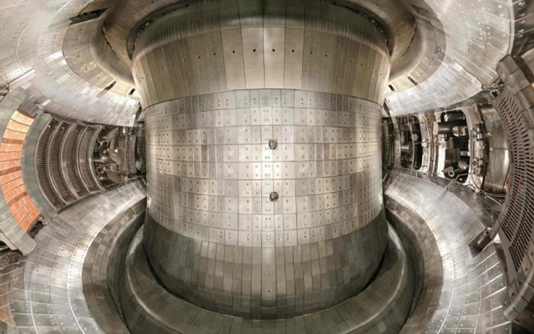HEFEI, China, April 28, 2019 (BSS/AFP) – A ground-breaking fusion reactor
built by Chinese scientists is underscoring Beijing’s determination to be at
the core of clean energy technology, as it eyes a fully-functioning plant by
2050.
Sometimes called an “artificial sun” for the sheer heat and power it
produces, the doughnut-shaped Experimental Advanced Superconducting Tokamak
(EAST) that juts out on a spit of land into a lake in eastern Anhui province,
has notched up a succession of firsts.
Most recently in November, it became the first facility in the world to
generate 100 million degrees Celsius (212 million Fahrenheit) — six times as
hot as the sun’s core.
Such mind-boggling temperatures are crucial to achieving sustainable
nuclear fusion reactions, which promise an inexhaustible energy source.
EAST’s main reactor stands within a concrete structure, with pipes and
cables spread outward like spokes that connect to a jumble of censors and
other equipment encircling the core. A red Chinese flag stands on top of the
reactor.
“We are hoping to expand international cooperation through this device
(EAST) and make Chinese contributions to mankind’s future use of nuclear
fusion,” said Song Yuntao, a top official involved in the project, on a
recent tour of the facility.
China is also aiming to build a separate fusion reactor that could begin
generating commercially viable fusion power by mid-century, he added.
Some six billion yuan ($890 million) has been promised for the ambitious
project.
EAST is part of the International Thermonuclear Experimental Reactor
(ITER) project, which seeks to prove the feasibility of fusion power.
Funded and run by the European Union, India, Japan, China, Russia, South
Korea, and the United States, the multi-billion-dollar project’s centrepiece
will be a giant cylindrical fusion device, called a tokamak.
Now under construction in Provence in southern France, it will incorporate
parts developed at the EAST and other sites, and draw on their research
findings.
– Unlimited power, mega budgets –
Fusion is considered the Holy Grail of energy and is what powers our sun.
It merges atomic nuclei to create massive amounts of energy — the
opposite of the fission process used in atomic weapons and nuclear power
plants, which splits them into fragments.
Unlike fission, fusion emits no greenhouse gases and carries less risk of
accidents or the theft of atomic material.
But sustaining the high temperatures and other unstable conditions
necessary is both extremely difficult and prohibitively expensive — the
total cost of ITER is estimated at 20 billion euros ($22.5 billion).
Wu Songtao, a top Chinese engineer with ITER, conceded that China’s
technical capabilities on fusion still lag behind more developed countries,
and that US and Japanese tokamaks have achieved more valuable overall
results.
But the Anhui test reactor underlines China’s fast-improving scientific
advancement and its commitment to achieve yet more.
China’s capabilities “have developed rapidly in the past 20 years,
especially after catching the ITER express train,” Wu said.
In an interview with state-run Xinhua news agency in 2017, ITER’s
Director-General Bernard Bigot lauded China’s government as “highly
motivated” on fusion.
“Fusion is not something that one country can accomplish alone,” Song
said.
“As with ITER, people all over the world need to work together on this.”



